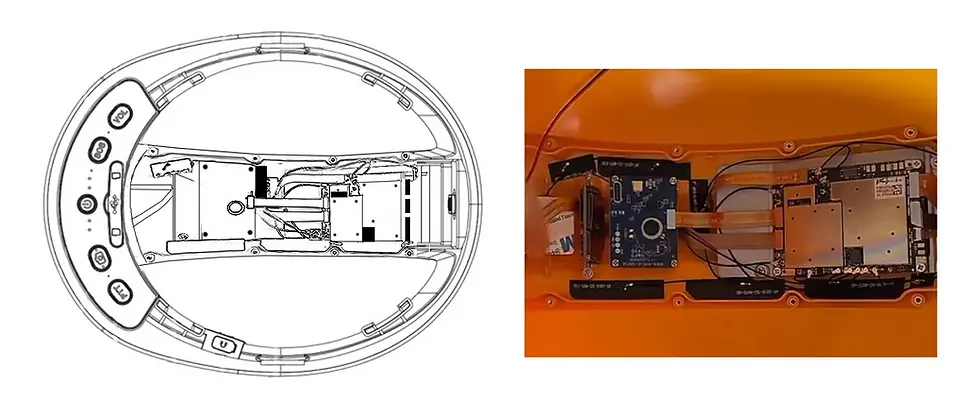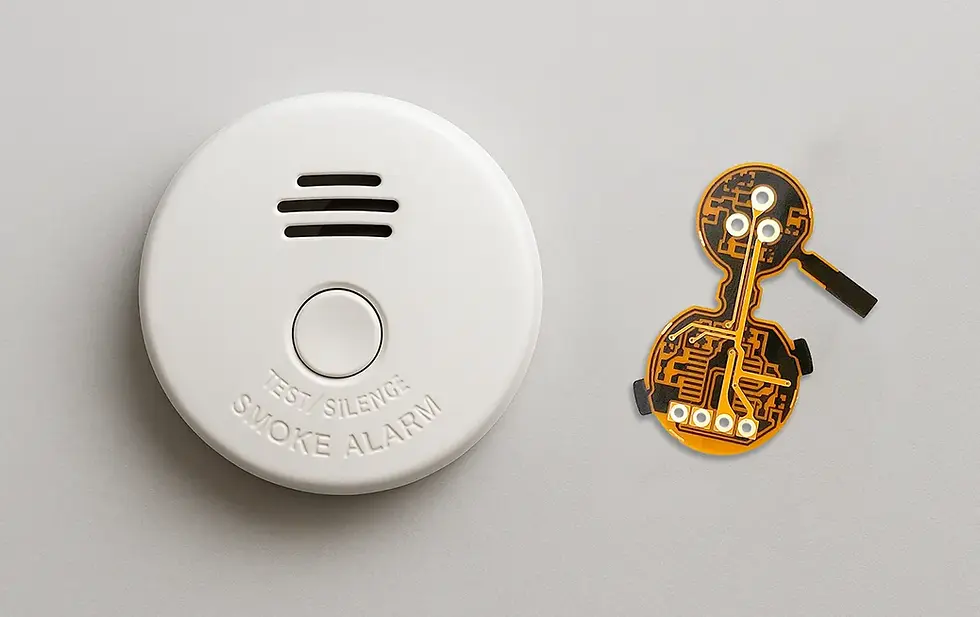Flex PCB for LED Light Strip: A Comprehensive Guide
- Flex Plus Tech team

- Dec 12, 2024
- 5 min read
Updated: Mar 31
Flexible PCB boards are changing the way we make electronics because they have special qualities. For LED light strips, these flexible PCBs are super important for creating new designs and making sure everything works well. inside LED light strips, flex PCB helps by giving support for both the structure and electricity. This makes sure the light is even and helps put the strips in tight or uneven spots easily.

Flex PCB for LED Light Strip
LED light strips are basically individual circuit boards with electrical interconnects. Flexible PCB LED strip light comprises the majority of such light strips, on which SMD LEDs are mounted. In other words, flexible printed circuit boards form the substrate upon which manufacturers mount SMD LED. In addition to providing a flexible structure, the substrate material also helps dissipate the heat generated by individual LEDs during operation. The high flexibility of it allows the light strips to be strung into any shape.
Flex PCB LED Strips are very popular because they can be applied not only to curved surfaces but also to non-linear surfaces. Your LED strips can now be easily turned without cutting sections and reconnecting them with connectors.
Flex LED Strips are very popular in many lighting design applications due to their small size, high brightness, and low power consumption, such as bars, homes, buildings, restaurants, and store displays.
Advantage of Flex PCB in LED Light Strips
Flex circuit boards offer several advantages that make them an integral part of the applications:
1. Enhanced Flexibility
Flexible PCBs allow LED light strips to be installed in spaces where rigid alternatives cannot. They can conform to curves, corners, and uneven surfaces, making them ideal for any location where lighting is needed, such as automotive interiors.
2. Lightweight and compact design
The flexible PCB is thin and light, giving LED light strips a sleek, modern look. This feature is critical for applications that require minimal volume, such as drones, decorative lighting, and portable devices.
3. Durability and reliability
They are designed to withstand bending and environmental stresses, extending the life of it. They prevent cracking and remain functional under repetitive motion or vibration.
4. Support for complex designs
Flexible PCBs can integrate complex circuits and multiple functions in a single design. This reduces assembly complexity and improves performance efficiency, meeting the needs of advanced lighting systems with dimming, color control, or smart IoT capabilities.
Choose a professional flex PCB supplier to meet your project needs, such as specific layouts, trace widths, or additional components.
LED light strips are just one example of how flexible PCBs are used, but they have many other uses too, like in consumer electronics, cars, military gear, and industrial machinery. As technology gets better, flexible circuits can be used in even more creative ways. The future of this technology will be influenced by trends like making things smaller, and lighter, and using environmentally friendly materials.
Why Flex PCB is an important part of LED light strips?
Flexible printed circuit boards are a special type of PCB that can be bent into any shape. They are mainly used in high-temperature applications, as well as high-density applications. Flexible design circuit boards are made of polyimide or transparent polyester film as substrate materials, which have high heat resistance and are very suitable for soldering and mounting components.
PCB boards are divided into different types, including single-sided PCB, double-sided PCB, and multi-layer PCB, as well as rigid PCBs, flexible PCBs, rigid-flex PCBs, and aluminum circuit boards.
In the current lighting market, we can find that both single-layer and double-layer flex PCBs are used for LED light strips. Some LED light strip manufacturers choose single-layer flex PCBs to reduce costs. Although double-layer PCBs are more expensive, LED light strips made with them have higher lumens and better heat dissipation, which significantly improves their stability and longer service life.
Flexible electronics have good plasticity, which is very suitable for LED strips. As technology advances, LED strips are becoming more and more popular. The addition of flexible PCBs further makes LED lights provide great convenience in home lighting and decoration.

Copper Thickness in FPCB:
When selecting an LED strip, it's crucial to consider the copper thickness on the circuit board. The reason is that the current drawn by the LED strip is determined by the power of the LEDs it contains. Therefore, high-powered lights may require a thicker copper layer, typically measured in ounces to handle the increased current. For instance, a strip with more powerful LEDs might use copper that's 2oz, 3oz, or even 4oz thick. This thickness ensures efficient electrical conductivity and helps prevent overheating, ensuring the longevity and reliability of it.
Note:
1) The thicker the copper, the greater the current that passes through the LED strip circuit. The thinner the copper, the greater the resistance and the more heat buildup, which will eventually lead to voltage drop and even early LED failure.
2) The thicker the copper, the faster the heat will be dissipated. The faster the heat generated by the LED is transferred to the surrounding environment, the better the performance and life of the LED. Copper is an excellent conductor of heat, so a thicker copper layer will greatly promote the heat transfer of the LED.
How to Choose the Right Flexible PCB for LED Strips
When choosing a flexible PCB for LED strips, consider the following design and technical factors:
1. Thermal Management
LEDs generate heat, which can degrade performance and lifespan if not managed properly. Choose a flexible PCB with effective heat dissipation features, such as thicker copper layers or integrated heat sinks.
2. Reliability and Durability
Evaluate the reliability of the PCB in terms of the number of bends, and resistance to environmental factors such as humidity, and mechanical wear.
3. Bending Radius
Make sure the flexible PCB can handle the required bending radius without cracking. A smaller bending radius requires higher-quality materials and precise manufacturing.
4. Customizability
Flexible PCBs Flexible printed circuit boards or flex circuits are a special type of circuit board that can be bent into any shape. They are mainly suitable for high temperatures and can also be used in high-density applications. The substrate material in flexible PCB circuits is transparent polyester or polyimide. They can withstand high temperatures and are ideal for soldering LEDs on them.
How to Find a Reliable FLEX PCB Supplier
When looking for a flexible PCB supplier or custom flex PCBs, consider the following:
Experience and expertise: Look for a supplier that specializes in flexible circuit boards and has extensive experience in LED applications.
Manufacturing Capabilities: Assess their production volume, technological sophistication, and flexibility in accommodating custom specifications.
Quality Assurance: Confirm that the supplier employs rigorous testing procedures and meets industry standards like lSO 9001 certification.
Technical support: Select a vendor that offers design guidance and ongoing assistance after purchase to enhance your project's success.
With over twenty years of expertise in producing various kinds of printed circuit boards, Flex Plus excels in the manufacturing of a diverse array of flexible PCBs. Our commitment to quality is evident in every board we produce, as we utilize only high-quality substrates. These substrates ensure consistent performance and reliability, no matter the operating conditions. Whether for medical, lighting, or military applications, our high-quality flexible boards retain their flexibility even after going through the heat-curing process.




Comments